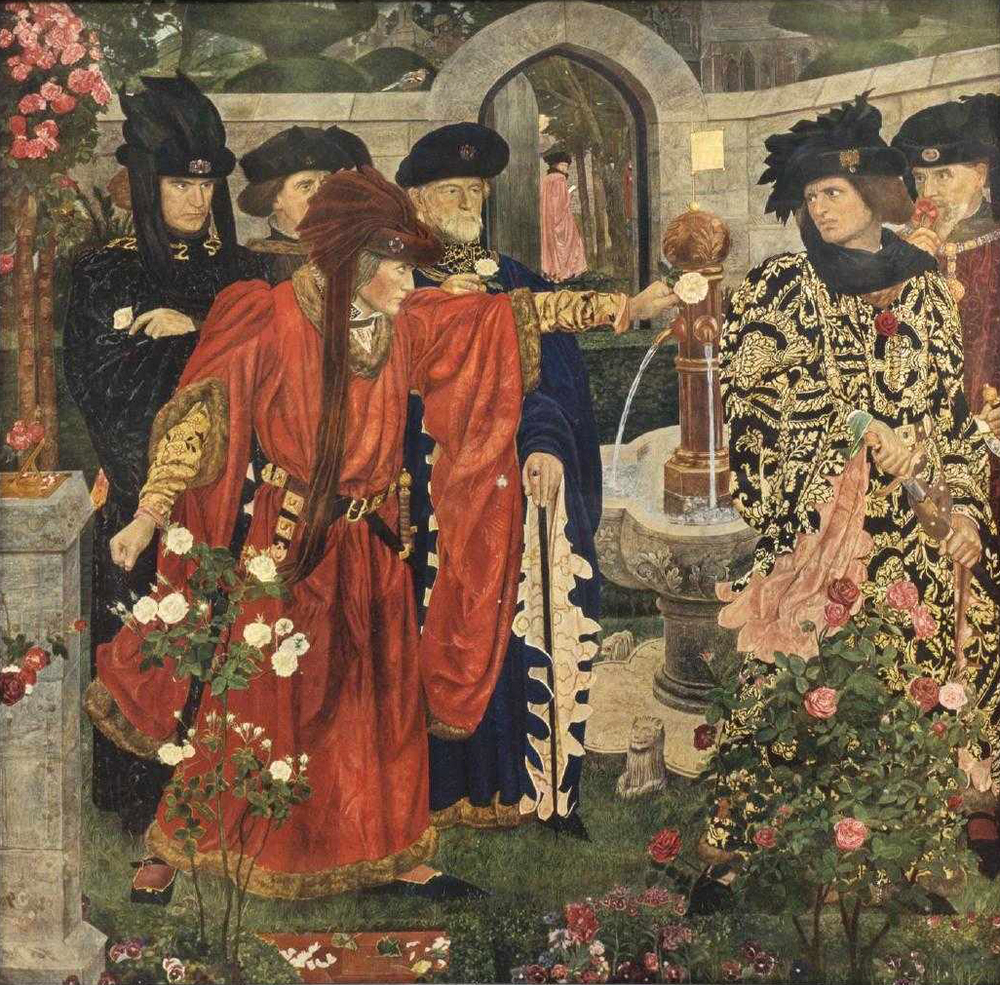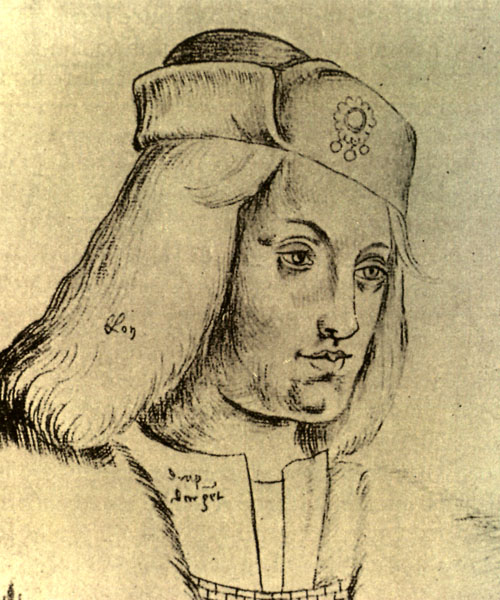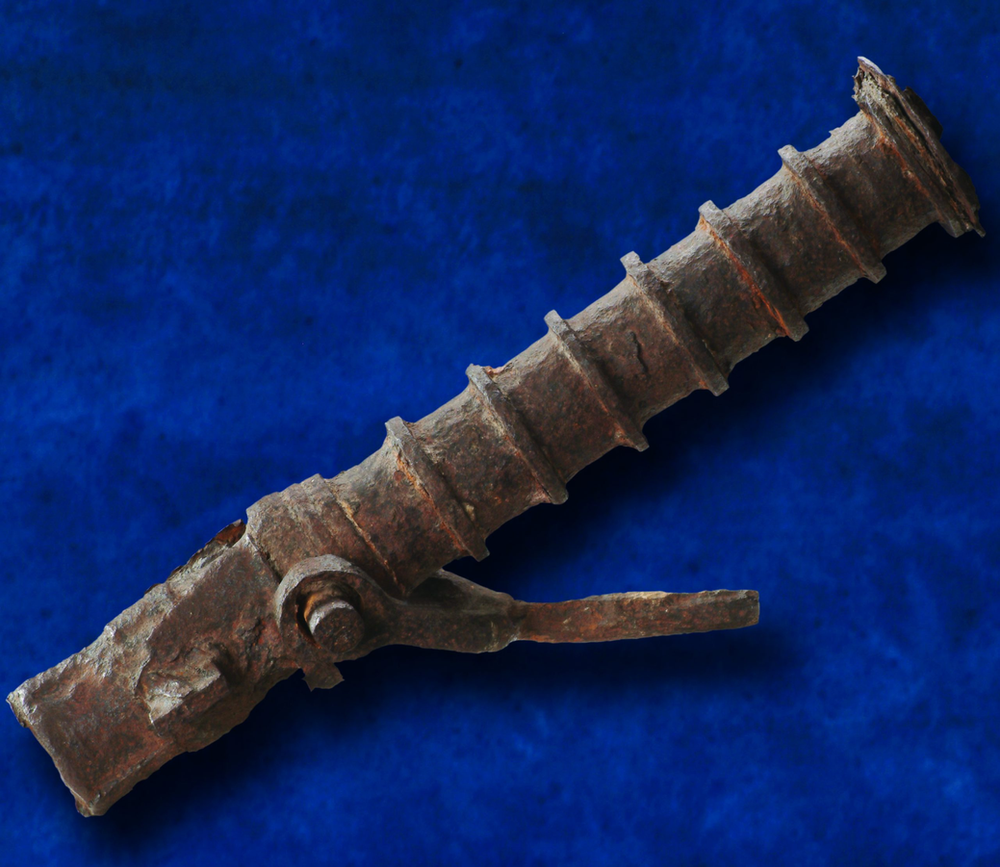
The fifteenth century was a period of major political upheaval in the British Isles as the Wars of the Roses raged on between the great and the good every new years seemed to bring a new King or pretender to the throne. But how did that affect Waterford, a city terrible far away from the squabbles of noble families? Well we escaped the worst of the conflict, but in 1495 the war finally came calling, and a certain cannon in the Medieval Museum from that fateful event has an interesting story to tell…

Now this is far from a straightforward issue, so before we get into the siege we’re going to have to get a little background, for starters, what were the Wars of the Roses? Who were the main players? and What does a handsome young Flemish lad have to do with any of it?
The War of the Roses was so long and bloody that many know it better today as the inspiration behind Game of Thrones – The Lancasters become Lannisters and the Yorks become Starks and altogether very little else changes, there is still just as much murder and misery in both! so where did the Wars of the Roses begin? Very simply, as was almost always the case, it’s a power struggle between two noble families, both of whom believed they had the right to rule. The disputed succession was between two cadet branches of the house of Plantagenet, the Yorks (who were represented by the symbol of a white rose) and the Lancasters (who were represented by a red rose).

As is always the case in such disputes, the constant chopping and changing and the switching of allegiances led to some considerable confusion in society. Here in Waterford, an island away from noble families vying for power, day to day we were largely unaffected by the conflict, however after the death of Richard III when Henry Tudor took power and all looked to be concluded, only then did Waterford get its first taste of the Wars of the Roses.
In 1495 Waterford City came under siege by a man named Perkin Warbeck and the forces he had assembled to ‘reclaim’ his throne as the rightful heir. Who Warbeck really was is a matter of some dispute, the most popular story based on the confession obtained from him under duress suggests that he was Flemish, the son of the comptroller of Tournai. However who he claimed to be was much more impressive, Richard IV, the second son of the late King Edward IV.

So who was Richard IV, the actual Duke of York that our friend Perkin Warbeck attempted to impersonate – and why didn’t he have anything to say about it? Well largely because he was probably dead, certainly missing by this point and along with his brother Edward V he made up one half of the infamous Princes in the Tower.

The Princes in the Tower is one of the uglier episodes in the Wars of the Roses, and tells the tale of two young boys who were allegedly murdered by their own uncle. Richard III was the brother of Edward IV (you might remember him a little better as the King in the car park) and following Edward’s death, despite the crowning of his elder son (also named Edward, not exactly the most imaginative lot) all looked rosy until Richard seized power and had his young nephews declared illegitimate and imprisoned in the Tower of London, safely out of his way. What happened next is unusual because by all accounts the boys just vanished and were not seen again after 1483. Popular theories about their murders emerged but because no evidence (until the later discover of some skeletons under the staircase), no murderer and no bodies were immediately forthcoming, speculation was all that could really be counted upon. At any rate, Richard certainly wasn’t around to point an accusing finger at the strange Flemish man parading about pretending to be him.

Warbeck wasn’t the first pretender to the throne, he wasn’t even the first one during Henry Tudor’s rule (We’ll get to Lambert Simnel in another blog) but he did gain some popularity in Ireland, particularly in Cork. If any of you have ever heard Cork as being described as the Rebel County then here is where you have you answer, their suupport of Warbeck gained them a bad reputation. When Perkin Warbeck arrived in Cork in the company of a silk merchant his noble appearance made quite a splash and those loyal to the former royal family declared him a York.
Many in Cork at that time were Yorkists, loyal to the branch of the family which had included Edward IV and his dastardly brother Richard III, as a result they weren’t exactly fond of Henry Tudor, or Henry VII, because in their eyes he was little better than an usurper who had invaded from France and killed the last legitimate York King. As the Wars of the Roses were such a bloody conflict they actually eliminated the males lines of both the Yorks and the Lancasters leaving many with no choice to accept the rule of Henry VII – unless that is, a missing prince showed up out of nowhere right in their midst.

So, Warbeck had the fine clothes, he had the support, now all he needed was the crown. Between 1490 and 1497 he travelled around the British isles and also to the Court of Burgundy where he made various attempts to claim the title, but here in Waterford we remember him best for the siege of 1495.
With the assistance of foreign mercenaries, Warbeck invaded Ireland in the hope of raising an army to invade England. When he stopped in Waterford the siege lasted eleven days. In the first recorded use of artillery fire used as a defence, guns, lodged in Reginald’s Tower, fired on his ships as they tried to enter the St John’s River which then flowed into the Suir at Reginald’s Tower where the Mall is today.
Sieges were a tricky business and could be devastating for inhabitants as they were isolated and slowly ran out of food and clean water sources. To shorten the suffering the people of Waterford formulated a plan to help bring the siege to an end. They apparently travelled upstream and dammed the St. John’s River creating a great flood in the low-lying ground where the Tramore Road runs today. Then, when the tide went out on the River Suir, the water on the lower reaches of John’s River at Reginald’s Tower dropped so low that Warbeck’s ships were stranded in the mud and his soldiers became sitting ducks, easily picked off by archers from the town walls. The citizens defending Waterford were probably using some of the 400 bows and 3,000 arrows that Henry VII sent as a thank you for refusing to support Lambert Simnel some years earlier. Those who tried to escape the ships were caught in the gun and arrow fire from the city walls. Those not slain were easily captured and were brought to the market square in Broad Street to have their heads chopped off.

As nothing was subtle during this period in history the severed heads were then displayed on pikes around the city gates and walls as a warning to other traitors. However with the weather being very warm, the heads began to attract flies, as well as a host of other pests and well, to be frank, they didn’t exactly smell very nice so they had to be quickly taken down and thrown into the ditch outside the town wall – a ditch which was then called Traitor’s Ditch in their honour!
Warbeck himself escaped and probably very much regretted ever coming near Waterford at all. He didn’t give up so easily and valiantly continued his attempt to hustle his way on to the throne but by 1497 he was a captive at the court of King Henry VII. Initially treated well by Henry he refused to stop his scheming and so in 1499 our handsome Flemish anti-hero was put to death. Things went markedly better for the people of Waterford who were rewarded for their efforts and their loyalty to the crown once again.

The cannon on display in the Medieval Museum is believed to be from one of Warbeck’s ships during this siege. It certainly dates from this period and is almost identical to the cannon on the ship, the Nina which sailed to America under Christopher Columbus just three years earlier. The cannon is a tangible link to one of the great events in the history of Waterford. It marked the first artillery siege of an Irish city and the beginning of a friendship that would transform the fortunes not just of the Wyse family of Waterford, but also of the city of Waterford itself.
So there we have it, if you’re bold enough you don’t even need to be able to prove you’re a prince by DNA to have a shot at the crown, just find a missing one and a merchant willing to lend you some fine clothes and you too can have a go – just maybe don’t try besieging the noble city of Waterford, historically it hasn’t ended too well…


